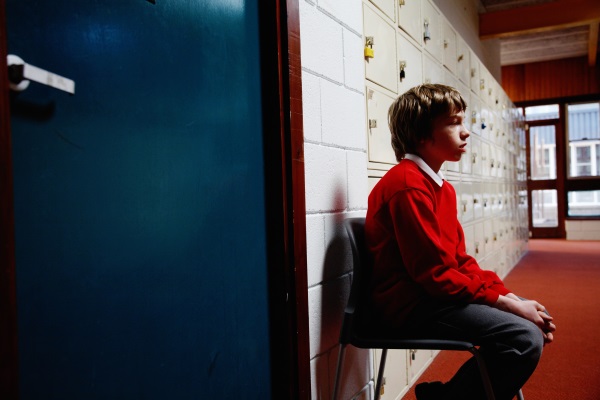Playing the fool, acting up... or indicating an unmet need? Joanna Grace explains how teachers can get to the root of poor behaviour.

As a teacher, you may have heard inappropriate classroom behaviour – loud noises, jokes, foot tapping – dismissed as 'just attention seeking'. But is it?
'Just' implies that this troublesome behaviour is somehow different to other forms of challenging behaviour that are worthy of investigation. 'Attention-seeking behaviour' is seemingly for no valid reason, just a facet of that child's personality. They are merely an attention-seeking child.
Think about your own behaviour: is any of it random? Does any of it just happen? If you have sought attention through behaviour, was it because you wanted attention or because you were experiencing a negative feeling or situation that caused you to need more attention than you were getting? Behaviour always happens for a reason.
Let me be clear: dismissing behaviour as attention-seeking is simply a way of opting out of thinking about the reasons behind behaviour. All behaviour is communicative. To communicate with someone we need to gain their attention, but gaining their attention is not the purpose of our action. The purpose is to convey information and hopefully to receive something back: reassurance, restoration, understanding and so on.
If the person we are trying to communicate with shuts us down simply because we tried to get their attention, it is very likely that we will try harder next time.
Prevention is always less effort than cure
If attention-seeking behaviour were an innate part of a child’s personality, we ought to be able to detect this early – these attention-seeking children. Let’s take a tour around a hospital maternity unit and take a look at the babies, which ones are the attention-seeking ones? Could you spot them?
Of course, you couldn’t. A baby might cry because it wants food, or because it’s uncomfortable or frightened, but not for no reason. Something else must be happening to prompt a child to seek attention. This could be:
Or it could simply be that children feel safer and happier when people are paying attention to them. In trying to nip the problem in the bud with strict responses to behaviour, teachers often create bigger problems for themselves further down the line. Children producing niggly low level behaviour because they feel insecure are only going to feel more insecure if attention is removed from them, they will produce bigger behaviours in response to this bigger problem.
Attention-seeking behaviour often seems undeserved, unwarranted, and the manner in which children (and adults) go about seeking attention is unpleasant, loud, gregarious, obnoxious.
When I studied for my masters in SEN, Dr Sellman at the University of Nottingham taught me a neat trick. Before responding to the behaviour, replace the notion of ‘attention-seeking’ with the function or need behind it.
At the root of many attention-seeking behaviours is insecurity. Read these two sentences aloud and see how they make you feel.
'I don't want any attention-seeking children in my class.'
'I don't want any insecure children in my class.'
My guess is that the first sentence gave you a sense of thwarted power. You do not want any attention-seeking children in your class because you are in charge, and your pupils should respect your authority. You do not have time for the clowning around of those who feel the spotlight should be on them all the time.
However, I can’t imagine any teacher would want insecure children in their class – not because they want to banish them, but because they want every pupil to feel safe and secure. Here we reach the essence of this misunderstanding. Teachers don’t dismiss children as ‘just attention-seeking’ because they do not care.
On the contrary, they try really hard to make a difference, working under immense pressure. Someone cavorting about in class just causes disruption.
However, prevention is always less effort than cure. Teachers should give time to identifying the means by which their pupils seek attention, and replace the outward behaviour with the concealed function. Even just this little change will make things easier for you as feeling compassion for a person is less exhausting than feeling irritated by them.
Once you have identified the children who seek attention, work out little ways to give it before it’s asked for. What is the attention equivalent of regular hand washing? Just like the hand washing, it needn’t be a big thing. It could be:
When you start making these small changes you will see the attention-seeking behaviours decrease, and behind them you will find a child full of warmth towards you because you were the person who understood them in a world of other people who just thought they were annoying.
Rethinking behaviour allowed staff at The Weatheralls Primary School to minimise disruption and improve classroom engagement. Optimus members can read the full case study and download a sample individual behaviour plan.
More smiles, less stick: Chris Dyson on a positive approach to behaviour